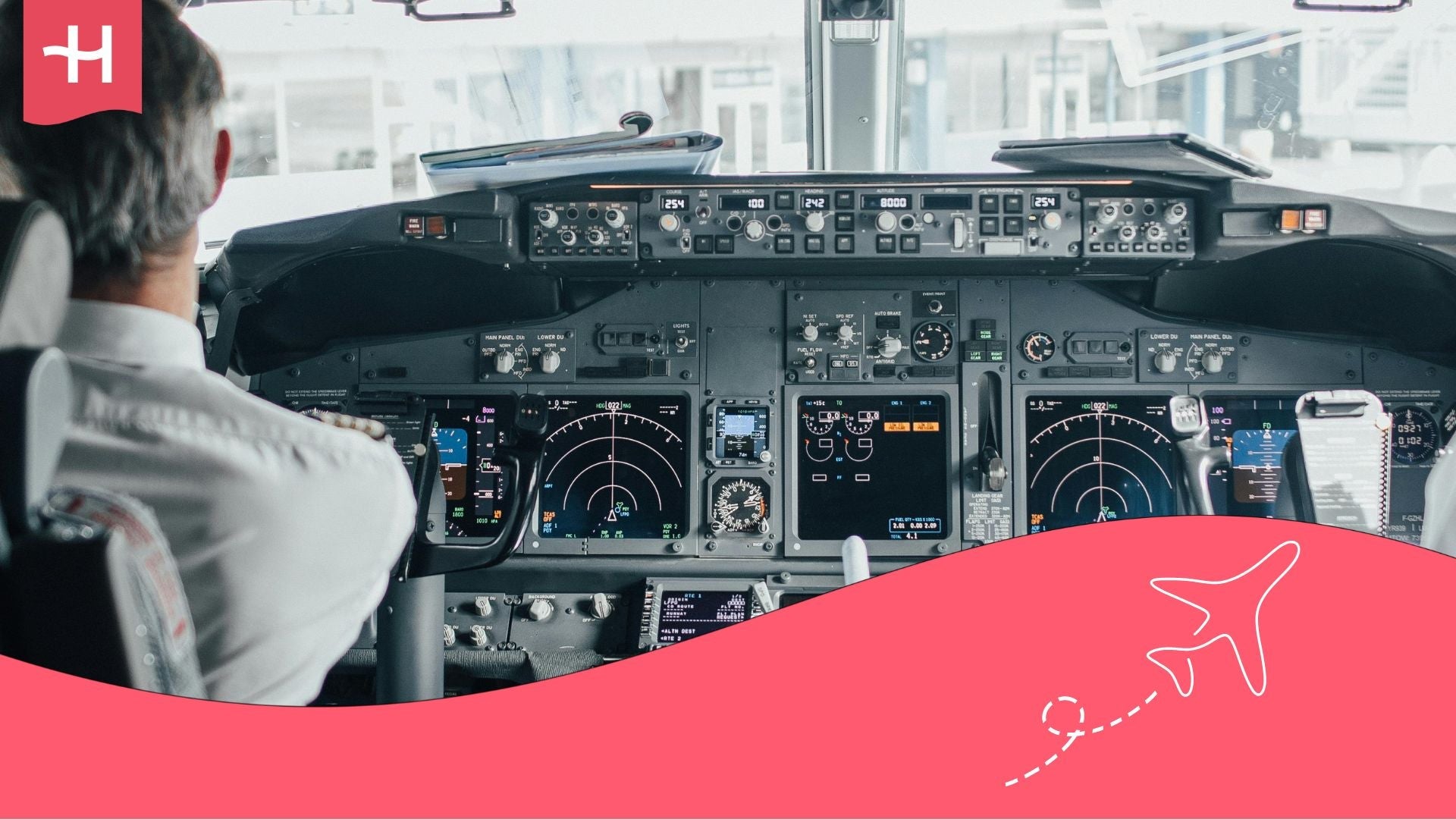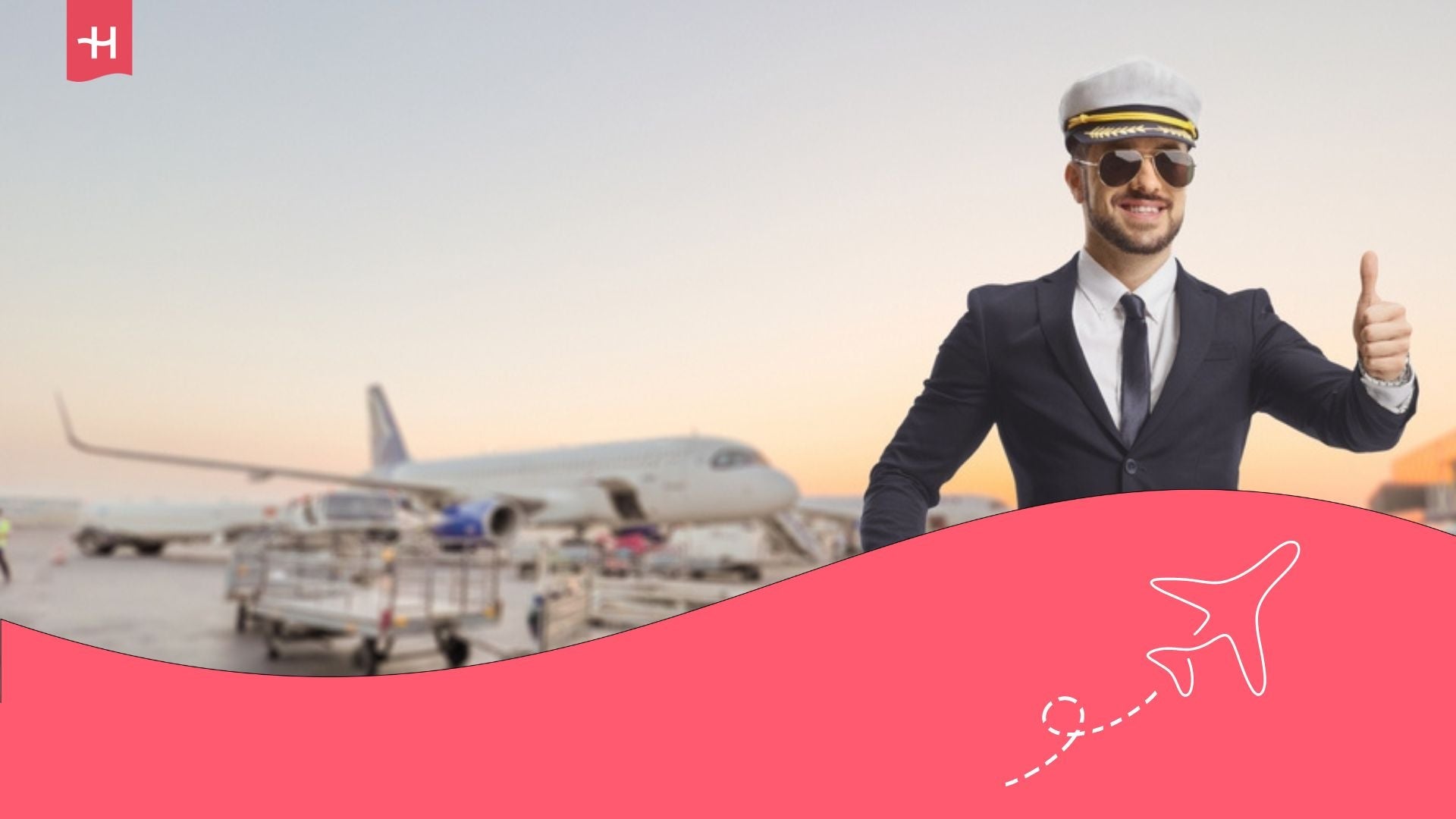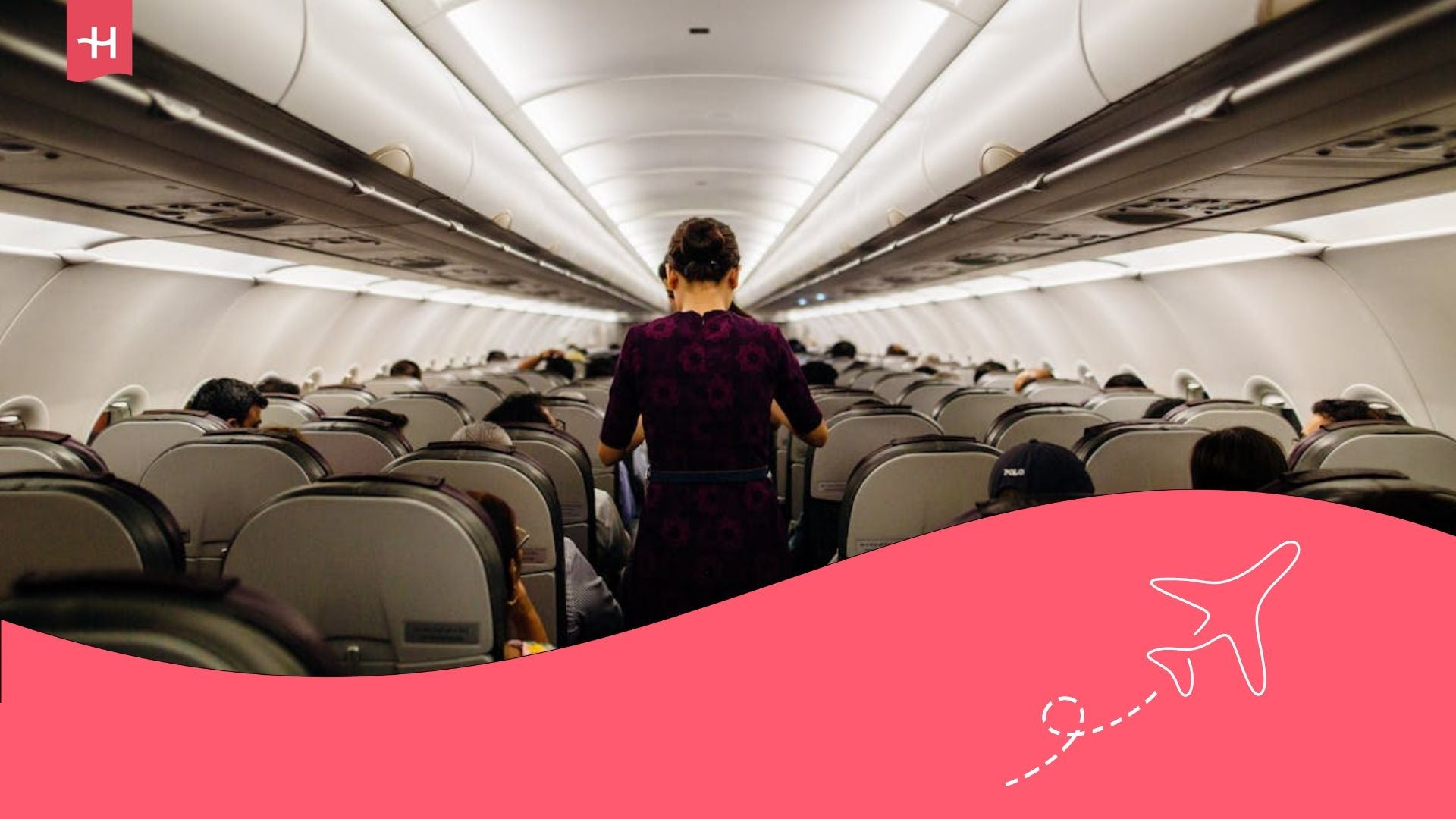International flight attendant requirements: Become one!
Knowing the requirements to become an international flight attendant will help you prepare to work with the best airlines around the world.
Working as an international flight attendant is one of the most common dreams among cabin crew. Traveling the world, experiencing new cultures, and representing an airline outside your home country is a unique professional experience. At the same time, meeting the international flight attendant requirements set by most airlines is essential to make this dream a reality.
Technical training, language skills, interpersonal abilities, and a strong capacity to adapt to multicultural environments are just a few of the key requirements. If you are looking for flight attendant openings and aiming for airlines with international routes, keep in mind that they prioritize highly skilled candidates who can handle any situation with confidence.
In this guide, you will learn everything you need to know to work as an international flight attendant, from mandatory training and language requirements to physical standards, necessary documentation, and the qualities most valued by airlines worldwide.
Requirement 1: Official training and license to work as an international flight attendant
The first requirement to become an international flight attendant is having a cabin crew license issued by the aviation authority of the country where you completed your training.
This certification shows that you have completed both theoretical and practical training covering topics such as air safety, first aid, survival skills, service protocol, communication, and international regulations.
The length of the course ranges from six months to a year, depending on the school and country. In Latin America, training is overseen by organizations such as ANAC in Argentina, DGAC in Chile, Peru, and Mexico, or AAC in Colombia. In Europe, courses must meet the standards set by EASA, the European Union Aviation Safety Agency.
Once you have the certificate, you will need to pass an aviation medical exam to confirm that you are physically and mentally fit to fly. This step is essential, because without both the license and medical approval, you cannot legally work as an international flight attendant.
Important: If you are a frequent traveler and want to stay connected without worrying about expensive roaming or looking for a new SIM at every destination, Holafly’s subscription plans are for you. With a single eSIM, enjoy internet in more than 170 countries for a fixed price and no surprises on your bill. Travel without limits and connect easily and securely! 🚀🌍

Requirement 2: Language proficiency
English is the official language of aviation, making it an essential requirement. International airlines typically expect at least an upper-intermediate level (B2), either certified or demonstrated during the interview.
Speaking a second language like French, Portuguese, Arabic, Chinese, or German can really set you apart. It makes it easier to assist passengers from around the world and can open up more opportunities with international airlines.
During the selection process, interviews often include spoken English assessments, service simulations, and listening comprehension tests. Some airlines offer internal language training, but most expect candidates to already have a solid foundation before joining.
Requirement 3: Physical and medical conditions required by airlines
For safety and performance reasons, international airlines set specific medical standards for their crew. Most require a Class 2 aviation medical exam, which checks vision, hearing, blood pressure, and overall fitness. It also assesses the ability to stand for long periods and respond quickly in emergency situations.
In terms of physical parameters, airlines typically require:
- Minimum height: Between 1.58 m and 1.75 m (5’2“ and 5’9”), depending on the airline.
- Arm reach: Able to reach 212 m (8.3 feet) with feet on the ground.
- Weight proportional to height, maintaining a healthy appearance and mobility.
These requirements are not about appearance, but about operational and safety reasons, since crew members need to reach overhead compartments and handle emergency equipment efficiently.
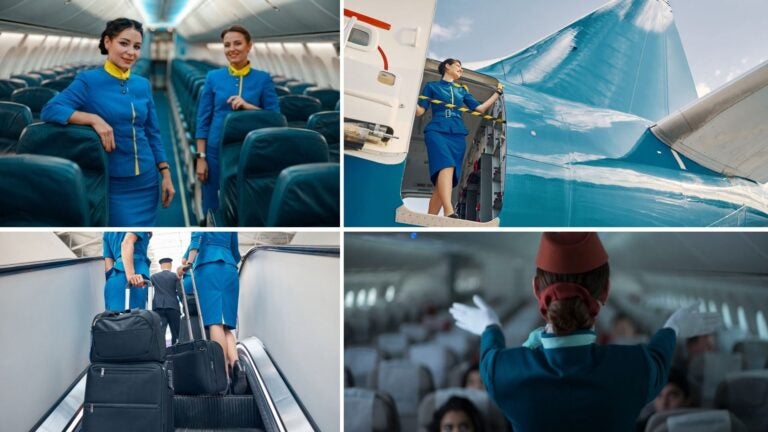
Requirement 4: Documentation and permits to work internationally
Documentation is another key part of the requirements to become an international flight attendant, because without the proper permits, you cannot work on flights outside your home country.
Candidates must have a valid passport with at least six months before it expires, as well as any necessary visas or work permits for the country where the airline is based.
International airlines are usually divided into two models:
- Some airlines handle visas on their own, like Emirates, Qatar Airways, or Etihad Airways, providing accommodation, transportation, and work residence permits directly in their home country.
- Some airlines require local residency or work authorization, such as Iberia, Air France, British Airways, or American Airlines, and they give priority to candidates who are legally allowed to work in their country.
In addition, many airlines require criminal background checks, airport security clearances (AVSEC), and in some cases, international medical certificates or vaccination records, especially for intercontinental flights.
For example, on routes covering destinations in Africa or Asia, the yellow fever vaccine or international vaccination card may be required.
Finally, flight attendants need to be ready to travel constantly and go through immigration checks in every country, which means keeping all documentation up to date and following local entry and residency rules.
Requirement 5: Presence, image, and professionalism
Working as an international flight attendant means representing the airline to passengers from all over the world, so personal appearance and professionalism are very important. Airlines have strict standards covering everything from hairstyles and makeup to nails and uniform guidelines.
Some examples:
- Emirates and Qatar Airways are especially known for their polished appearance standards, which include the signature low bun, red lipstick, and a uniform that always looks immaculate.
- British Airways prioritizes understated elegance and naturalness, with muted colors and light makeup.
- LATAM and Aeroméxico adopt fresher styles, but with the same attention to detail, where order and neatness are non-negotiable.
But beyond looks, what truly sets an international flight attendant apart is her presence: confident posture, a genuine smile, a warm tone of voice, and a constant sense of empathy.
Airlines also look for qualities like punctuality, responsibility, and the ability to stay calm under pressure, since these traits are part of the image they want their crew to project.
In short, the image of a flight attendant is not just about aesthetics, but about reflecting the company’s values and building trust with each passenger.
Requirement 6: Availability and cultural adaptation
Flying internationally means dealing with ever-changing schedules, different time zones, and teammates from all over the world. That’s why being adaptable is one of the key qualities airlines look for in an international flight attendant.
Airlines need personnel who are willing to:
- Accept base changes or seasonal rotations.
- Work day or night shifts, including weekends and holidays.
- Be away from home for several days at a time.
This flexibility goes hand in hand with cultural awareness. International cabin crew work with colleagues from many countries, religions, and traditions, and they care for passengers whose habits and expectations can be completely different from their own.
Many airlines include training on cultural diversity, international etiquette, and conflict resolution to make sure their crew can offer respectful, empathetic service no matter where in the world they are.
Emotional maturity is essential. Spending long stretches away from home can be challenging, so airlines look for people who are resilient, upbeat, and great team players. In the end, an international flight attendant doesn’t just travel between countries, but between cultures, and doing it well requires curiosity, openness, and respect.
Requirement 7: Work experience and additional skills
Even if prior experience is not mandatory, having a background in tourism, hospitality, or customer service can set you apart. These roles help you deal with difficult situations, connect with different types of passengers, and stay professional under pressure. If you have worked in these fields, make sure to showcase it on your flight attendant CV, as it can really give you an advantage.
Top airlines like Singapore Airlines, Cathay Pacific, and Lufthansa place a high value on candidates with strong interpersonal skills, empathy, and effective communication. Additional skills, such as first aid knowledge, extra languages, or experience in premium service, are also considered a big advantage.
In addition, more and more airlines are prioritizing soft skills that cannot be learned in the classroom alone, such as:
- Leadership and teamwork, essential in multinational cabins.
- Time management and attention to detail, to comply with procedures without errors.
- Ability to react quickly, essential in emergencies or itinerary changes.
For those just starting out, joining training programs or internships with local airlines can be a great way to get your foot in the door. This experience not only builds confidence but also shows dedication to the career and makes the transition to an international setting much smoother.
Ultimately, experience is not just about years on the job. Airlines value a mindset of continuous learning and growth, and they recognize this in every new crew member.
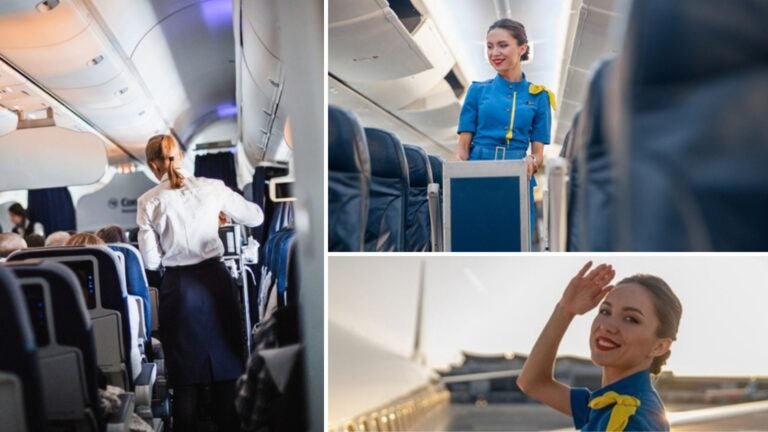
The ideal profile of an international flight attendant
As we’ve seen, becoming an international flight attendant is about far more than earning a license or speaking multiple languages. It takes dedication, discipline, and the ability to adapt to a constantly changing environment.
An international flight attendant serves as the face of her airline to passengers from all over the world, taking care of their safety while delivering top-quality service on every journey.
The ideal international flight attendant not only meets the basic requirements but also brings personal qualities that are hard to teach, like empathy, strong communication, self-discipline, and teamwork. The job takes dedication and effort, but it rewards you with unforgettable experiences, friendships around the world, and a whole new way of seeing life.
In the end, being an international flight attendant is not just a job, it’s a lifestyle. Those who embrace it see every flight as an opportunity to grow, learn, and leave their mark wherever they go.
Frequently asked questions about the requirements to become an international flight attendant
Most airlines require candidates to be at least 21 years old at the time of hiring. There is no strict upper age limit, but many companies tend to favor applicants who combine youth, good health, and fitness. The key is meeting medical and professional appearance standards, regardless of your exact age.
Yes. Many international airlines, especially in the Middle East and Asia, welcome candidates with no prior experience and provide full training during onboarding. That said, having a background in customer service, hospitality, or tourism can give you an edge over other applicants.
The minimum level usually required is B2 (upper-intermediate) according to the Common European Framework. Interviews and assessments are typically conducted entirely in English, so candidates are expected to communicate fluently, follow technical instructions, and converse comfortably with international passengers.
It depends on each airline’s policy. In general, airlines do not allow visible tattoos, facial piercings, or accessories that affect the company image while crew members are in uniform. Some employers may ask crew members to fully cover their tattoos during service.
In most cases, yes. International flight attendants are usually expected to live in the airline’s home base city. Some airlines, especially in the Middle East, provide housing or relocation support, while others require candidates to already be residing in the country.
The entire process, including training, certification, and selection, usually takes six months to a year. However, this can vary depending on the country, course availability, and how often airlines open their recruitment.





 Language
Language 


















 No results found
No results found



